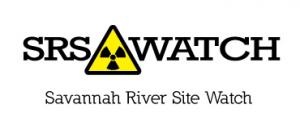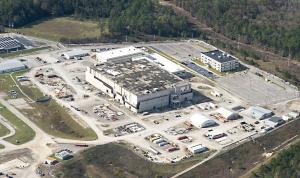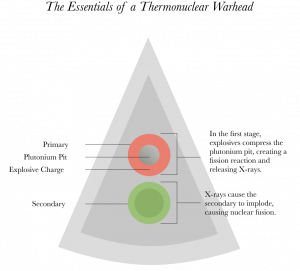
Lacking Construction Schedule, Problems Face DOE's Nuclear Weapons Plutonium-Component Facility at Savannah River Site

SRS Watch is a non-profit organization working on sound policies and projects by the U.S. Department of Energy, inclduing oppositio n to the proposed SRS Plutonium Bomb Plant.
National Nuclear Security Administration’s FY24 “Performance Evaluation Report” for SRS Plutonium “Pit” Plant Says Project Management is “Less than Adequate”
COLUMBIA, SC, UNITED STATES, February 18, 2025 /EINPresswire.com/ -- Construction of a massive new facility to make plutonium bomb cores for the first time at the U.S. Department of Energy’s Savannah River Site (SRS) in South Carolina is proceeding without an overall schedule and with “less than adequate” project management. Lack of these key planning elements could cripple the project, according to an evaluation released by DOE on February 13, 2025.
An up-to-date project cost estimate and an “integrated master schedule” is essential to project success yet a contractor performance review for Fiscal Year 2024 reveals that the proposed Savannah River Plutonium Processing Facility (SRPPF) lacks both, underscoring a growing risk of continued schedule slippage and increasing cost overruns. Contractors carry out the pit-plant work, under supervision by a small amount of DOE employees.
Annual “Performance Evaluation Reports” (PERs) of contractor performance at seven DOE sites across the country controlled by the DOE’s nuclear weapons division, the National Nuclear Security Administration (NNSA), were obtained on February 13, 2025 via Freedom of Information Act (FOIA) requests by three public-interest groups that monitor DOE sites: Savannah River Site Watch (Columbia, SC), Nuclear Watch New Mexico (Santa Fe, NM) and Tri-Valley CAREs (Livermore, CA). As is mandated for such “frequently requested documents,” NNSA posted the PERs on line on February 14, along with annual “fee determination letters” - at https://www.energy.gov/nnsa/nnsa-frequently-requested-documents.
The SRPPF project - also called the SRS Plutonium Bomb Plant - managed by private contractor Savannah River Nuclear Solutions (SRNS), was last estimated in the Fiscal Year 2025 NNSA budget request to cost between a stunning $18 billion and $25 billion (page 271). This massive cost, which should catch the eye of those looking to slash the federal budget, makes the project one of the most expensive in U.S. history. The project is for a mission to make new plutonium pits - bomb cores - initially for new nuclear warheads, designated the W87-1 and W93. A long-range goal is to replace the pits in all 3800 warheads, further revealing that the aim for such a massive stockpile is not “deterrence” but rather to keep the U.S. on a dangerous footing to fight a full-scale nuclear war.
A discussion of the timing of the release of the next formal pit-plant cost estimate, called Critical Decision-2, is totally left out of the PER. But NNSA has elsewhere revealed that release of CD-2 could come at the end of calendar year 2025, well over 4 years after a now-outdated June 2021 cost estimate of $6.9 billion to $11.1 billion (in Critical Decsion-1).
The SRS PER, revised in January 2025, uses strong language in pointing out schedule problems with construction of the SRPPF, which has been charged to produce 50 plutonium pits by 2030, a date NNSA has admitted will not be reached. Among the serious problems identified in the PER:
- Poor Integrated Master Schedule quality.
- Deficiencies in the SRNS procurement processes resulted delays and rework.
- Poor schedule quality continued to be an issue throughout the year…increasing the risk to timely mission completion.
- A project Integrated Master Schedule to CD-4 has not been finalized. [Critical Decision-4 is project start-up, not expected until the mid-2030s or later.]
A Government Accountability Office report of February 2025 (GAO-25-106675) on NNSA project management cites in a footnote a pertinent January 2025 GAO report titled "Nuclear Weapons: NNSA Does Not Have a Comprehensive Schedule or Cost Estimate for Pit Production Capability" (GAO-23-104661). The footnote (on page 12) states that “We recommended that NNSA’s pit production program develop a life cycle cost estimate for establishing NNSA’s pit production capability that aligns with GAO cost estimating best practices. We also reiterated a previous recommendation that the program develop an integrated master schedule that meets best practices for schedule development. NNSA concurred with the recommendations and stated it would develop both, but efforts as of December 2024 have not been comprehensive nor met best practices.” And, the problems identified by GAO continue into 2025, as identified in the SRS "Performance Evaluation Report," dated January 7, 2025.
“The annual review of contractor performance in planning the construction of SRS pit-plant facilities is a warning that more cost increases and additional schedule delays loom,” said Tom Clements, director of SRS Watch. “Based on NNSA’s own analysis, it is clear that no case is made that the project is on a track to be completed by a specified date, leaving the project open to schedule, cost and construction problems and risk of termination,” added Clements.
Despite admitted schedule problems and lack of presentation of a new project cost estimate, the SRS PER reveals that the project implemented a $9 billion “construction management” contract, awarded by SRNS to Fluor Federal Services on September 30, 2023. As NNSA has kept the contract from the public, it is unknown what it entails or how a remedy is presented in the contract to overcome the chronic management and schedule problems for the SRS plutonium pit plant. In any event, Congress has yet to appropriate the amount of funds contracted and should consider withholding them until a master schedule is developed and clearer explanations presented about the cost and “need” for new nuclear weapons.
As is always expected with the PERs, NNSA had many glowing this to say about some SRNS work at SRS but the “award fee determination” indicated the company was given only a “satisfactory” rating for the “effective integrated project management” of the pit project. Such a rating is reminiscent of the track that SRNS went down in its failed management of the plutonium fuel (MOX) boondoggle, which was terminated in 2017 after a waste of $5 billion on construction at SRS. (It is the partially finished MOX building that NNSA is proposing to convert into a plutonium pit plant.) The company nonetheless earned a bonus from NNSA of $55.5 million out of a possible $66.2 million.
Tom Clements
Savannah River Site Watch
+1 803-834-3084
email us here
Distribution channels: Environment, Military Industry, Politics, Science, World & Regional
Legal Disclaimer:
EIN Presswire provides this news content "as is" without warranty of any kind. We do not accept any responsibility or liability for the accuracy, content, images, videos, licenses, completeness, legality, or reliability of the information contained in this article. If you have any complaints or copyright issues related to this article, kindly contact the author above.
Submit your press release

